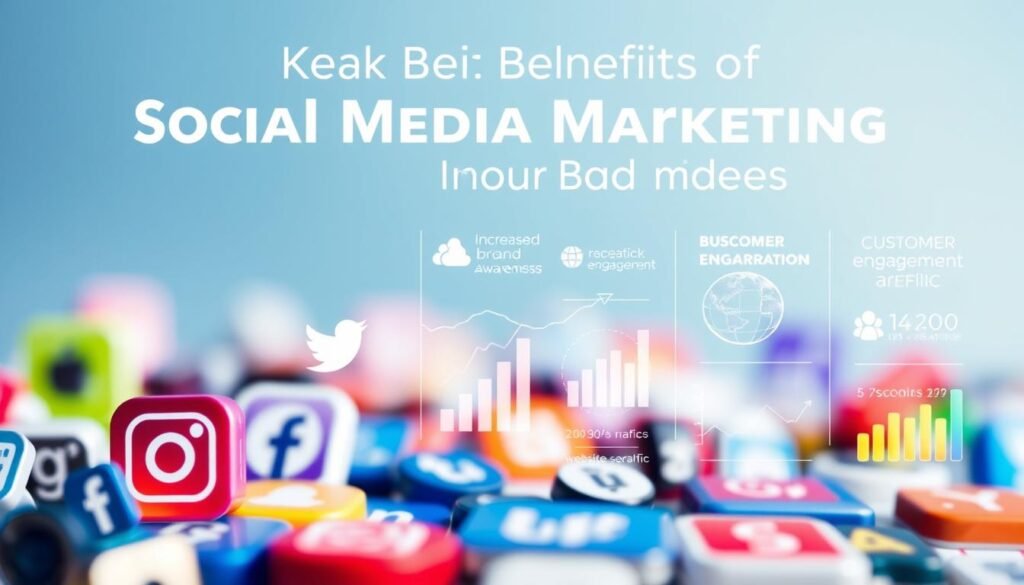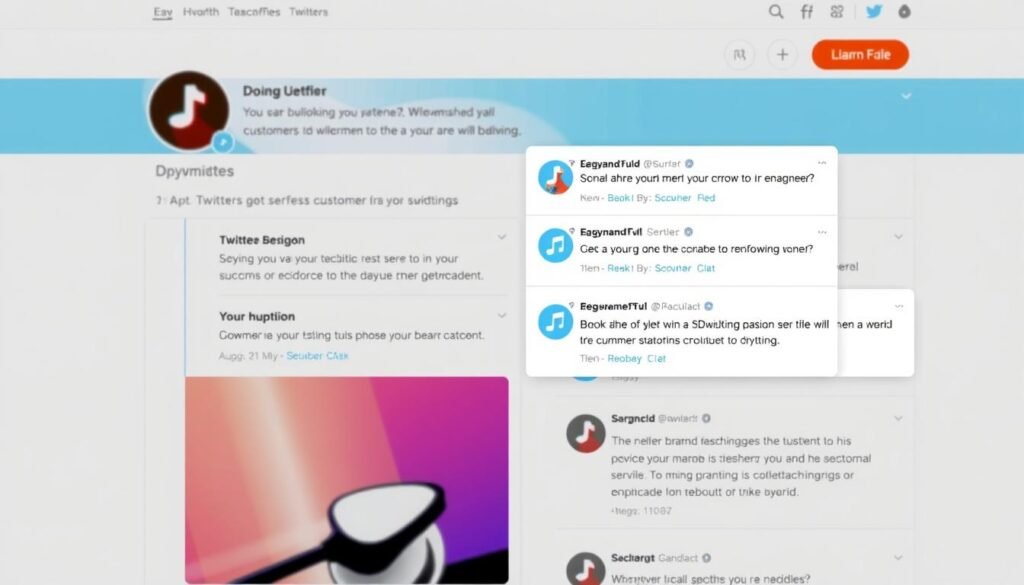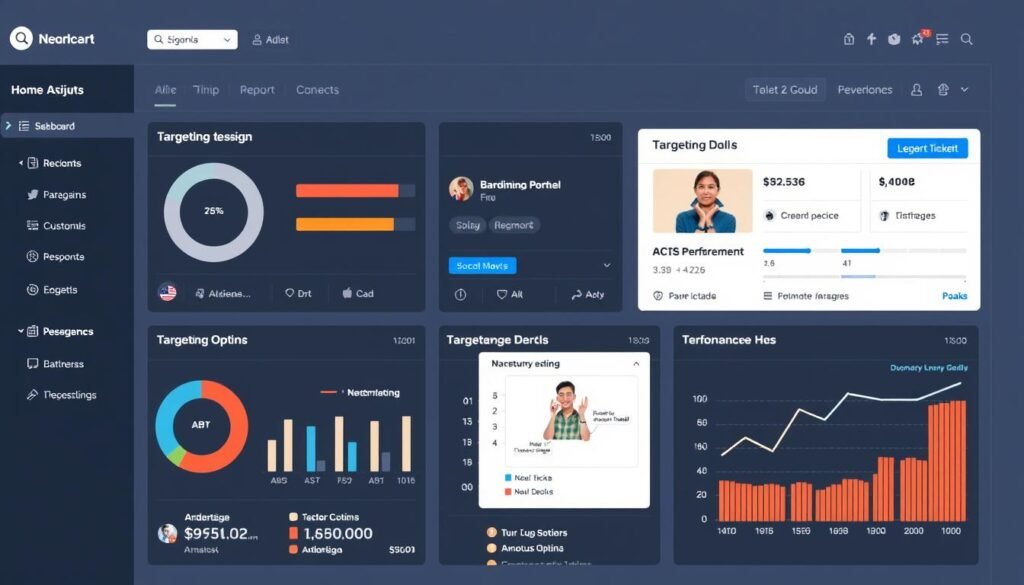In today’s fast-paced digital landscape, having a robust online presence is crucial for businesses of all sizes. With billions of users worldwide, social media has become an indispensable tool for companies looking to expand their reach and connect with their audience.
By leveraging social media marketing, businesses can build brand awareness, engage with customers, and drive sales in ways traditional marketing cannot match. This comprehensive guide will walk you through everything you need to know about marketing digital social media, from understanding its power to implementing effective strategies.
Key Takeaways
- Understand the power of social media for your brand
- Learn effective strategies for social media marketing
- Discover how to build brand awareness and engage with customers
- Find out how to drive sales through social media
- Gain actionable insights to elevate your brand
Understanding the Power of Marketing Digital Social Media
In today’s digital age, harnessing the potential of social media marketing can be a game-changer for your brand’s visibility and growth. As we dive into the world of social media marketing, it’s essential to understand its core components and how they’ve evolved over time.
What Is Social Media Marketing?
Social media marketing represents the intersection of digital communication and strategic brand promotion. It utilizes various social media platforms where users connect and share information to build brand visibility and drive business growth. By leveraging these platforms, businesses can reach their target audience more effectively and foster meaningful connections.
The essence of social media marketing lies in its ability to facilitate two-way communication between brands and their audience. This interaction not only helps in building brand awareness but also provides valuable insights into customer preferences and behaviors.
The Evolution of Social Media as a Marketing Tool
Over the past 18 years, social media has undergone significant transformations. From simple profile pages to sophisticated ecosystems, social media marketing has evolved to offer unprecedented ways to reach and engage with specific target audiences. The dramatic growth of interactive digital channels has taken social media to levels that challenge even the reach of traditional media like television and radio.
As of 2023, there were 4.76 billion social media users globally, representing over 59% of the world’s population. This vast reach has made social media marketing an indispensable tool for businesses aiming to expand their online presence.
Why Social Media Marketing Matters in 2024
The power of social media marketing is driven by its unparalleled capacity in three core marketing areas: connection, interaction, and customer data. By building relationships with customers, facilitating two-way communication, and gathering insights for better targeting, businesses can create a robust marketing strategy that drives growth and engagement.
As consumer behavior continues to shift toward digital platforms, and expectations for brand engagement reach new heights, understanding and leveraging social media marketing is more crucial than ever. By doing so, businesses can stay ahead of the curve and achieve their marketing goals in an increasingly competitive landscape.
Key Benefits of Social Media Marketing for Businesses

The rise of social media has revolutionized the way businesses approach marketing, offering a unique opportunity to connect with customers and build brand awareness. As a business owner, you’re likely aware of the importance of having a strong online presence, and social media marketing is a crucial component of this.
By leveraging social media platforms, you can reach a large audience, drive website traffic, and increase conversions. Social media marketing provides a powerful channel for engaging with customers, building brand recognition, and fostering loyalty.
Building Brand Awareness and Recognition
One of the primary benefits of social media marketing is its ability to increase brand awareness and recognition. By creating engaging content and maintaining an active presence on social media, you can place your brand in front of potential customers where they already spend their time online.
This increased visibility can help you build a strong reputation and establish your brand as an authority in your industry. As a result, you’ll be better positioned to attract new customers and drive business growth.
Driving Website Traffic and Conversions
Strategic social media content can drive significant website traffic and increase conversions by creating multiple touchpoints throughout the customer journey. By sharing relevant and engaging content, you can encourage visitors to visit your website and take a desired action.
This might include making a purchase, filling out a contact form, or subscribing to a newsletter. By tracking your website traffic and conversion rates, you can refine your social media marketing strategy to optimize your results.
Enhancing Customer Engagement and Loyalty
Social media enables deeper customer engagement through direct interactions, community building, and personalized communication that fosters loyalty and trust. By responding to customer inquiries and engaging with your audience, you can build strong relationships and establish a positive reputation.
This, in turn, can lead to increased customer loyalty and advocacy, driving long-term business growth and success.
Cost-Effectiveness Compared to Traditional Marketing
Compared to traditional advertising methods, social media marketing is often a more cost-effective option, making it accessible for businesses of all sizes. By leveraging social media platforms, you can reach a large audience without breaking the bank.
This is particularly beneficial for small businesses or start-ups with limited marketing budgets. By tracking your results and adjusting your strategy accordingly, you can maximize your return on investment and achieve your business goals.
Developing a Winning Social Media Marketing Strategy

To elevate your brand’s online presence, developing a robust social media marketing strategy is essential. A comprehensive plan that integrates your social media efforts with your team’s goals and broader business objectives is crucial for optimizing performance and delivering measurable results.
A well-defined social media marketing strategy sets clear boundaries around your team’s time and expertise, ensuring that your activities are aligned with your overall marketing success. This alignment is vital for achieving your business objectives, whether it’s increasing brand awareness, generating leads, or driving sales.
Setting Clear and Measurable Goals
Developing an effective social media marketing strategy begins with setting clear, measurable goals that align with your broader business objectives. You need to determine what you want to achieve through your social media efforts, whether it’s boosting brand awareness, generating leads, or driving sales. By setting specific goals, you can create a focused strategy that drives meaningful results.
For instance, if your goal is to increase brand awareness, you might focus on metrics such as follower growth rate, engagement rate, and reach. On the other hand, if your goal is to drive sales, you might focus on conversion rates and return on ad spend (ROAS). By understanding your goals, you can tailor your social media marketing strategy to achieve them.
Identifying Your Target Audience
Understanding your target audience is crucial for creating content that resonates with them. This involves conducting demographic research, creating detailed buyer personas, and analyzing their online behavior patterns. By knowing your audience, you can develop content that speaks to their needs and interests, thereby enhancing engagement and loyalty.
For example, a fashion brand might identify its target audience as young adults aged 18-24 who are interested in sustainable fashion. By understanding this demographic, the brand can create content that highlights its eco-friendly practices and appeals to this age group’s values. You can learn more about understanding your audience by exploring how different demographics interact with digital content, as seen in the impact of digital marketing on various sectors, such as the travel sector.
Conducting Competitive Analysis
Conducting a thorough competitive analysis is essential for identifying gaps in the market, understanding what’s working for similar businesses, and finding opportunities to differentiate your brand. By analyzing your competitors’ strengths and weaknesses, you can develop a social media marketing strategy that sets your brand apart.
This involves monitoring your competitors’ social media activity, engagement rates, and content types. You can use tools like social media listening tools to stay on top of industry conversations and trends. By doing so, you can identify areas where your brand can innovate and improve its online presence.
Creating a Content Calendar
Creating a structured content calendar is vital for maintaining audience interest while achieving your marketing goals. A content calendar helps you plan and organize your content in advance, ensuring that you’re consistently posting high-quality content that resonates with your audience.
A well-planned content calendar should balance promotional content with value-adding posts. This balance is crucial for keeping your audience engaged without overwhelming them with promotional messages. By incorporating a mix of content types, such as educational content, behind-the-scenes stories, and user-generated content, you can create a content strategy that drives engagement and conversions.
Choosing the Right Social Media Platforms for Your Brand
The key to a successful social media marketing strategy lies in choosing the platforms that best align with your brand’s goals and target audience. With so many platforms available, each with its unique features and user demographics, selecting the right ones can significantly impact your marketing efforts.
Facebook: Building Community and Relationships
Facebook remains one of the largest and most diverse social media platforms, making it an ideal place for building community and fostering relationships with customers across various age groups. Through groups, forums, and business pages, you can engage with your audience, share valuable content, and promote your brand.

Instagram: Visual Storytelling and Product Showcasing
Instagram is a visually-driven platform that excels at showcasing products and telling brand stories through high-quality visuals. It’s particularly effective for brands with strong visual elements or those targeting younger demographics who are active on the platform.

LinkedIn: Professional Networking and B2B Marketing
LinkedIn stands out as a professional networking site, making it the go-to platform for B2B marketing and professional services. By leveraging LinkedIn, you can establish your brand as a thought leader in your industry and connect with other professionals and potential clients.

Twitter: Real-Time Engagement and Customer Service
Twitter is known for its real-time engagement capabilities, allowing brands to interact with their audience instantly. It’s an excellent platform for customer service, enabling you to respond promptly to customer inquiries and concerns.

TikTok: Reaching Younger Audiences with Video Content
TikTok has gained popularity among younger audiences, making it an ideal platform for brands looking to reach this demographic through creative and engaging video content. By leveraging TikTok’s unique features, such as short-form videos and challenges, you can increase your brand’s visibility and appeal to a younger audience.

YouTube: Building Authority with Video Content
YouTube is the largest video-sharing platform, offering brands the opportunity to build authority through in-depth video content. By creating high-quality, informative videos, you can establish your brand as a trusted source in your industry and attract a loyal following.

Pinterest: Driving Traffic and Sales with Visual Discovery
Pinterest is a visual discovery platform that allows users to find and save ideas for various projects and interests. By utilizing Pinterest, you can drive traffic to your website and increase sales by showcasing your products in a visually appealing way.

By understanding the strengths and user demographics of each social media platform, you can make informed decisions about where to focus your marketing efforts. This strategic approach will help you maximize your brand’s presence and achieve your marketing goals.
Creating Engaging Content for Social Media
To stand out in the crowded social media landscape, you need to create content that resonates with your audience. Engaging content is not just about garnering likes and shares; it’s about building a meaningful connection with your audience and fostering a community around your brand. Effective social media marketing hinges on understanding what type of content works best for your audience and how to present it in a way that captures their attention.
Understanding Different Content Types and Formats
Different content types and formats perform variably across different social media platforms. For instance, visual content like images and videos tends to perform exceptionally well on platforms like Instagram and TikTok. On the other hand, text-based posts might be more suitable for Twitter or LinkedIn. Understanding these nuances is crucial for maximizing your content’s impact.
You can leverage a variety of content formats, including stories, polls, live streams, and more. For example, using Instagram Stories or Facebook Live can provide a more personal and immediate way to connect with your audience. Experimenting with different formats will help you identify what works best for your brand and audience.
Developing a Consistent Brand Voice and Aesthetic
Your brand’s voice and aesthetic are critical components of your social media identity. A consistent brand voice helps in building recognition and trust among your audience. It’s essential to define a tone that reflects your company’s values and resonates with your target audience. Whether your brand voice is professional, friendly, or humorous, consistency is key.
Similarly, your brand’s aesthetic, including visual elements like logos, color schemes, and typography, should be consistent across all your social media platforms. This visual consistency helps in reinforcing your brand identity and making your content instantly recognizable.
Leveraging User-Generated Content
User-generated content (UGC) is a powerful tool for building community and authenticity around your brand. By encouraging your customers to share their experiences with your products or services, you can create a rich source of content that is both engaging and trustworthy. UGC not only expands your content library but also fosters deeper connections with your customers.
To leverage UGC effectively, you can run contests or campaigns that incentivize your audience to share their content. Featuring customer-generated content on your social media channels can also make your audience feel valued and appreciated. For more insights on how user-generated content can enhance engagement, you can explore resources like the impact of digital storytelling on student, which highlights the power of personal narratives in creating meaningful connections.
Incorporating Trending Topics and Hashtags
Staying relevant on social media involves being aware of and incorporating trending topics and hashtags into your content strategy. This can significantly increase your content’s discoverability and help you stay top of mind with your audience. However, it’s crucial to incorporate trends thoughtfully and authentically, ensuring they align with your brand identity.
Using trending hashtags can put your content in front of a larger audience, but it’s essential to use them judiciously to avoid appearing forced or inauthentic. By balancing trending topics with your brand’s unique voice and message, you can maintain relevance while staying true to your brand’s identity.
Implementing Effective Social Media Marketing Techniques
To elevate your brand’s online presence, implementing effective social media marketing techniques is crucial. Social media marketing transcends industries and offers businesses a dynamic platform for brand amplification, customer engagement, and strategic growth.
By employing the right strategies, you can foster meaningful connections with your audience and drive measurable results. In this section, we’ll explore four key techniques to enhance your social media marketing efforts.
Storytelling to Connect with Your Audience
Storytelling is a powerful tool in social media marketing, allowing you to create emotional connections with your audience. By sharing compelling narratives, you can make your brand more relatable and memorable, increasing engagement with your content.
Effective storytelling involves understanding your audience’s values and interests, and crafting stories that resonate with them. This approach not only humanizes your brand but also fosters a deeper connection with your audience.
Using Influencer Partnerships to Expand Reach
Influencer partnerships can significantly expand your reach to new audiences and build credibility through third-party endorsements. By collaborating with influencers who align with your brand values, you can create authentic content that resonates with potential customers.

To find the right influencers, you can utilize influencer marketing platforms that connect brands with influencers across various niches.
Implementing Social Media Advertising
Social media advertising is a highly effective way to maximize your budget, target specific demographics, and achieve concrete business objectives through paid promotion. By leveraging social media advertising tools, you can create targeted campaigns that drive conversions and sales.

To get started with social media advertising, explore tools like Facebook Ads Manager or LinkedIn Ads, which offer robust targeting options and analytics.
Leveraging Employee Advocacy
Employee advocacy is a powerful way to amplify your message, humanize your brand, and tap into your team’s personal networks to extend your organic reach. By empowering your employees to share company content, you can create a trustworthy and authentic brand presence.
Encouraging employee advocacy involves creating a culture where employees feel valued and motivated to share company news and updates. This approach not only expands your reach but also fosters a sense of community within your organization.
Social Media Content Management and Optimization
To stand out in the crowded social media landscape, you need a robust content management strategy. Effective social media content management and optimization ensures your efforts are sustainable, efficient, and deliver maximum impact across all platforms.
Creating a Sustainable Content Schedule
You’ll learn how to create a sustainable content schedule that balances quality with consistency, allowing you to maintain an active presence without burning out your creative resources. This involves planning and organizing your content in advance to ensure a consistent flow of posts across your social media platforms.
Repurposing Content Across Platforms
The section will show you strategies for repurposing content across different platforms, adapting the same core message to fit each platform’s unique format and audience expectations. For instance, a blog post can be transformed into a video or infographic to suit different audience preferences.
Using Social Media Management Tools
We’ll explore essential social media management tools that can streamline your workflow, from scheduling posts and monitoring engagement to analyzing performance and managing multiple accounts. Tools like Hootsuite and Sprout Social can significantly simplify your social media management tasks.

Best Times to Post on Different Platforms
You’ll discover data-driven insights about the best times to post on different platforms based on when your specific audience is most active and engaged, helping you maximize the visibility and impact of your content. Understanding your audience’s behavior is crucial for optimizing your social media marketing efforts.
Measuring Social Media Marketing Success
To gauge the effectiveness of your social media marketing efforts, it’s crucial to measure their success accurately. This involves understanding various metrics and using analytics tools to gain insights into your performance.
Key Metrics to Track
Tracking the right metrics is fundamental to understanding your social media marketing performance. Key metrics include engagement rates, reach, impressions, click-through rates, and conversion rates. These metrics provide insights into how your content is performing and how your audience is interacting with your brand.
For instance, engagement metrics such as likes, comments, shares, and clicks indicate how your audience is responding to your content. Reach and impressions help you understand the visibility of your posts, while click-through rates and conversion rates show how effective your content is in driving traffic and sales.
Using Analytics Tools for Performance Insights
To gain deeper insights into your social media performance, you need to use analytics tools. Platform-native analytics tools, such as Facebook Insights and Twitter Analytics, provide valuable data on your performance. Additionally, third-party tools like Sprout Social and Hootsuite offer more comprehensive analysis and insights across multiple platforms.
These tools help you understand your audience better, identify trends, and make data-driven decisions to optimize your social media marketing strategy.
Setting Benchmarks and KPIs
Setting meaningful benchmarks and KPIs (Key Performance Indicators) is crucial for measuring the success of your social media marketing efforts. Your benchmarks and KPIs should align with your business goals, whether it’s increasing brand awareness, generating leads, or driving direct sales.
For example, if your goal is to increase brand awareness, your KPIs might include metrics such as reach and impressions. If your goal is to drive sales, your KPIs might focus on conversion rates and return on ad spend (ROAS).
Adjusting Strategy Based on Data
Once you have collected and analyzed your data, it’s essential to adjust your strategy accordingly. This involves using the insights gained from your analytics to identify areas for improvement and optimize your content and advertising efforts.
By continuously monitoring your performance and making data-driven decisions, you can refine your social media marketing strategy to achieve better results over time.
Overcoming Common Social Media Marketing Challenges
Despite its many benefits, social media marketing is not without its obstacles, and understanding these challenges is crucial to success. As you navigate the complex world of social media, you’ll encounter various hurdles that can impact your marketing efforts.
One of the most significant challenges you’ll face is managing negative feedback and comments. To address this, you can implement a constructive approach that turns potential PR problems into opportunities to demonstrate your brand’s commitment to customer satisfaction. This involves:
- Responding promptly to negative comments
- Acknowledging the issue and showing empathy
- Offering a solution or compromise when possible
Managing Negative Feedback and Comments
When dealing with negative feedback, it’s essential to remain calm and professional. By doing so, you can turn a negative experience into a positive one, showcasing your brand’s dedication to customer satisfaction.
Staying Consistent with Limited Resources
Another challenge you’ll face is maintaining a consistent social media presence with limited resources. To overcome this, consider the following strategies:
- Content batching: Create content in advance to save time
- Repurposing content: Use existing content across multiple platforms
- Prioritizing platforms: Focus on the platforms that yield the highest ROI
Keeping Up with Algorithm Changes
Social media platforms are constantly changing their algorithms and policies, making it difficult to predict and maintain success. To adapt to these changes, focus on creating high-quality content that resonates with your audience, rather than trying to game the system.
By understanding these common challenges and implementing effective strategies to overcome them, you can ensure that your social media marketing efforts remain successful and drive business results.
Future Trends in Marketing Digital Social Media
Staying ahead in the ever-changing realm of social media marketing requires understanding the emerging trends that will shape the industry. As we look to the future, it’s clear that social media marketing will continue to evolve, driven by technological advancements and shifting consumer behaviors. The key to success lies in adapting to these changes and leveraging them to enhance your marketing strategy.
The Rise of Social Commerce
Social commerce is revolutionizing the way consumers interact with brands online. With platforms integrating shopping features directly into the social experience, the line between browsing and buying is becoming increasingly blurred. You can capitalize on this trend by optimizing your social media profiles for shopping and creating engaging, product-focused content.
- Utilize Instagram Shopping and Facebook Shop to tag products directly in your posts.
- Create shoppable content that allows users to purchase from your brand seamlessly.
- Leverage user-generated content to showcase your products in real-life scenarios.
Augmented Reality and Virtual Reality in Social Media
AR and VR are transforming social media marketing by creating immersive brand experiences. These technologies allow users to virtually try products before purchasing, enhancing the online shopping experience. You can use AR filters and VR experiences to engage your audience and provide them with interactive ways to explore your brand.
AI and Automation in Social Media Marketing
The growing role of AI and automation in social media marketing is streamlining processes and optimizing campaign performance. From chatbots to personalized content recommendations, AI is reshaping how brands interact with their audiences. You can leverage AI-driven tools to analyze your social media data, predict consumer behavior, and automate routine tasks.
By embracing these future trends in marketing digital social media, you can stay ahead of the competition and drive more effective marketing results.
Conclusion
As you conclude this comprehensive guide, you’re now equipped with the knowledge to elevate your brand through effective social media marketing. Throughout this guide, we’ve explored how marketing digital social media offers unprecedented opportunities for businesses to connect with their audience, build their brand, and drive measurable results.
You now have a comprehensive understanding of how to develop an effective social media marketing strategy tailored to your specific business goals and target audience. This includes selecting the right platforms, creating engaging content, and implementing advanced marketing techniques.
To maximize your efforts, remember that social media marketing is an evolving discipline that requires ongoing learning, adaptation, and optimization. By applying the principles outlined in this guide, you’re well-equipped to turn followers into customers and customers into brand advocates, ultimately driving sales and increasing brand awareness.
With a solid marketing strategy in place, you’ll be able to navigate the ever-changing landscape of digital marketing and achieve your business goals.
